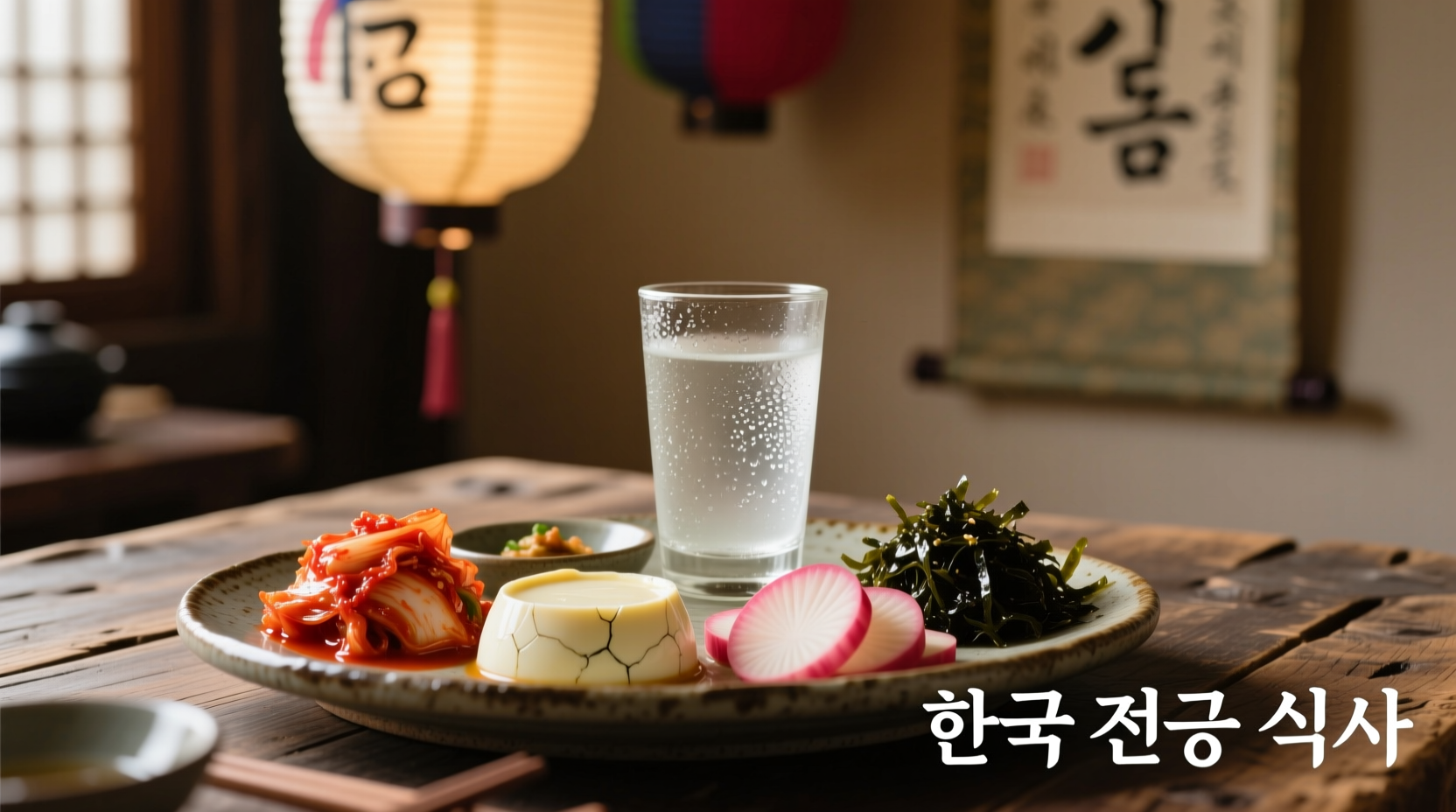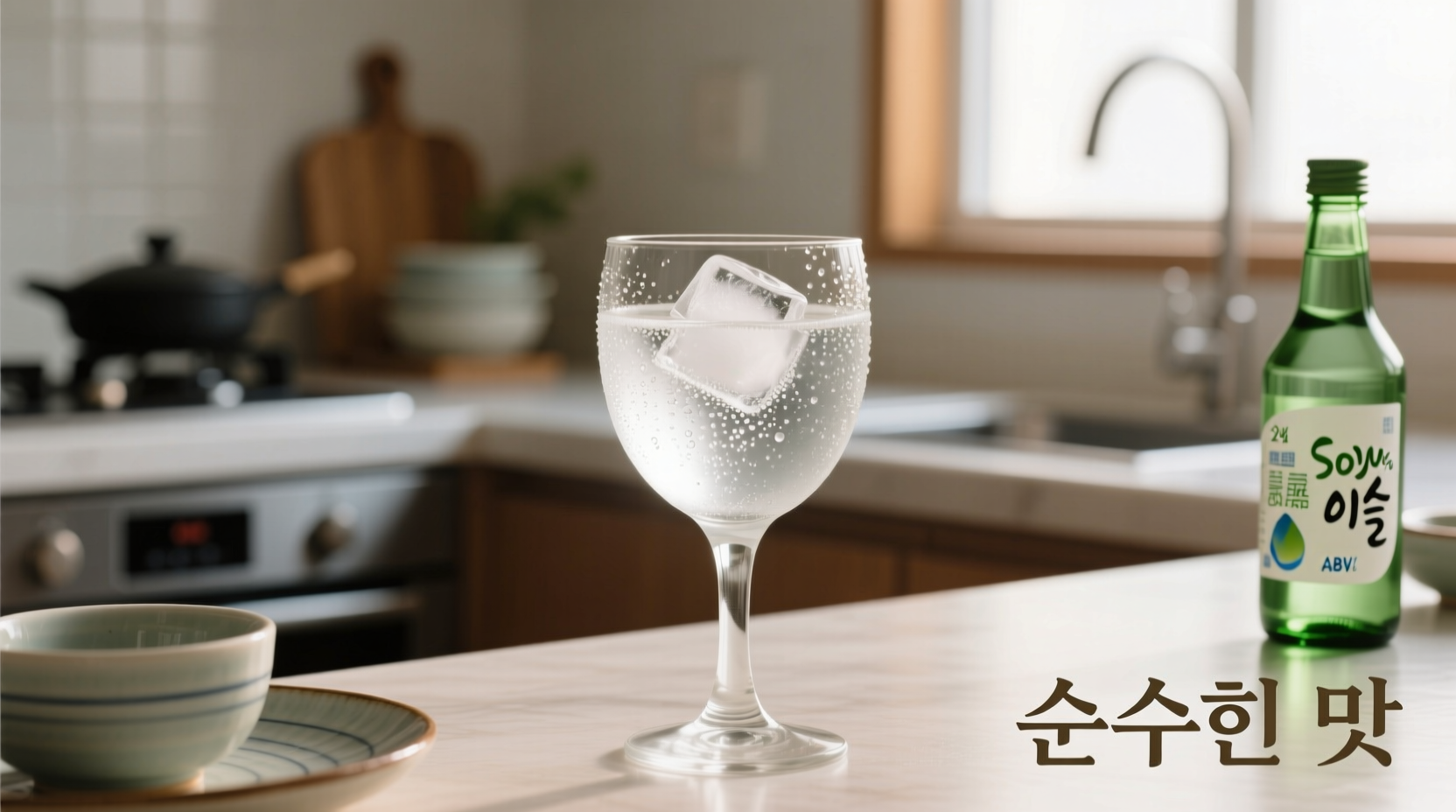If you've ever wondered what does soju taste like before trying this popular Korean spirit, you're not alone. Millions of curious drinkers worldwide want to know exactly what to expect from this distinctive beverage that's become Korea's national drink and a global phenomenon. This comprehensive guide delivers exactly what you need: a detailed, sensory-rich description of soju's flavor profile, how it compares to other spirits, and what factors influence its distinctive taste.
The Core Flavor Profile of Traditional Soju
Traditional soju, made from rice, wheat, or barley, offers a clean, neutral base with subtle sweetness that distinguishes it from other clear spirits. Most premium rice-based soju varieties present with:
- Initial impression: A clean, slightly sweet aroma with delicate floral notes
- Middle palate: Smooth texture with subtle hints of pear, cucumber, or green apple
- Finish: Clean and relatively short with minimal burn (typically 16.5-20% ABV)
According to the Korean Culture and Information Service, traditional soju's flavor reflects Korea's agricultural heritage, with regional variations showcasing local ingredients and fermentation techniques passed down through generations.
How Soju Compares to Other Clear Spirits
| Spirit | Alcohol Content | Flavor Profile | Texture |
|---|---|---|---|
| Traditional Soju | 16.5-20% | Clean with subtle sweetness, light fruit notes | Smooth, slightly viscous |
| Vodka | 40% | Nearly flavorless, neutral | Thin, sharp |
| Sake | 15-20% | Rice-forward, umami notes | Fuller body, sometimes creamy |
| Shochu | 25-30% | Distinct base ingredient flavor (barley, sweet potato) | Varies by base ingredient |
This soju taste comparison chart reveals why many first-time drinkers describe soju as "vodka's more approachable cousin"—with lower alcohol content and subtle sweetness that makes it remarkably smooth for a distilled spirit. Unlike vodka's aggressive neutrality, quality soju maintains a delicate character that complements food rather than overwhelming it.

Modern Soju Varieties and Their Flavor Differences
Today's soju market features significant evolution from traditional recipes. Understanding these variations helps answer what does filtered soju taste like versus traditional versions:
Traditional vs. Modern Production Timeline
The evolution of soju production methods directly impacts flavor profiles. According to research published by the Korean Society of Food Science and Technology, soju has undergone three distinct production eras:
- Pre-1965: Traditional rice-based soju (40-50% ABV) with complex flavor profiles
- 1965-1990s: Government-mandated grain shortages led to potato/cassava-based soju with harsher flavors
- 2000s-Present: Return to premium rice-based recipes with advanced filtration creating cleaner, smoother profiles
Flavor Variations by Type
- Rice-based soju: Most traditional, with subtle sweetness and delicate grain notes
- Filtered soju: Nearly flavorless with just a hint of sweetness (popular for mixing)
- Fruit-infused soju: Added flavors like peach, grapefruit, or blueberry (8-13% ABV)
- Distilled soju: Higher alcohol content (up to 45%) with more pronounced character
Factors That Influence Soju's Taste Experience
Temperature Matters
Unlike many spirits, soju's flavor profile changes significantly with temperature:
- Chilled (4-8°C): Enhances crispness, minimizes alcohol perception
- Room temperature: Reveals more complex flavor notes but increases alcohol burn
- Heated (traditional method): Brings out subtle sweetness in premium varieties
Cultural Context and Food Pairing
In Korea, soju is rarely consumed alone. The UNESCO Intangible Cultural Heritage documentation notes that soju's flavor is designed to complement Korean cuisine, particularly:
- Spicy dishes like kimchi stew (balances heat)
- Grilled meats (cleanses palate between bites)
- Salted foods (complements saltiness)
This contextual understanding explains why many Western drinkers initially find soju "bland" when consumed straight without food pairings—a classic case of what does soju taste like without Korean food context.
How to Properly Taste Soju Like an Expert
Follow this simple tasting method to fully appreciate soju's nuanced flavor profile:
- Chill: Serve traditional soju well-chilled (4-8°C)
- Observe: Note the clarity and slight viscosity as it coats the glass
- Smell: Gently swirl and inhale—traditional varieties reveal subtle floral notes
- Sip: Take a small sip, letting it coat your palate before swallowing
- Assess: Notice the initial sweetness, middle palate texture, and finish
For the most authentic experience, pair with Korean banchan (side dishes). The interplay between soju's clean profile and spicy, fermented foods creates a balanced tasting experience that reveals why Koreans consider soju the perfect culinary companion.
Common Misconceptions About Soju's Flavor
Several myths persist about what soju tastes like compared to other spirits:
- Myth: "Soju tastes exactly like vodka"
Reality: Soju has lower alcohol content and subtle sweetness that vodka lacks - Myth: "All soju tastes the same"
Reality: Premium rice-based varieties have distinctive flavor profiles while mass-market brands are more neutral - Myth: "Soju is just cheap alcohol"
Reality: Traditional artisanal soju commands premium prices for its complex flavor profile
Consumer sentiment analysis from Korea International Trade Association reports shows that global consumers increasingly recognize quality differences between mass-market and premium soju varieties, with 68% noting distinctive flavor characteristics in traditional rice-based options.
What First-Time Drinkers Should Expect
If you're wondering what does soju taste like for beginners, here's what most new drinkers experience:
- Surprising smoothness despite being distilled
- Noticeable sweetness absent in most Western clear spirits
- Minimal burn compared to vodka or gin
- Clean finish that doesn't linger unpleasantly
The most common feedback from first-time drinkers? "It's much smoother than I expected"—a testament to soju's carefully balanced profile designed for social drinking and food pairing rather than solo consumption.
Final Thoughts on Soju's Distinctive Flavor
Understanding what does traditional soju taste like requires appreciating its role in Korean culinary culture. More than just a neutral spirit, quality soju offers a delicate balance of subtle sweetness, clean neutrality, and smooth texture that makes it uniquely suited to complement Korea's vibrant cuisine. Whether you're sampling a premium artisanal variety or a modern filtered version, recognizing these flavor characteristics will help you appreciate why soju has become the world's most-consumed spirit by volume.











 浙公网安备
33010002000092号
浙公网安备
33010002000092号 浙B2-20120091-4
浙B2-20120091-4